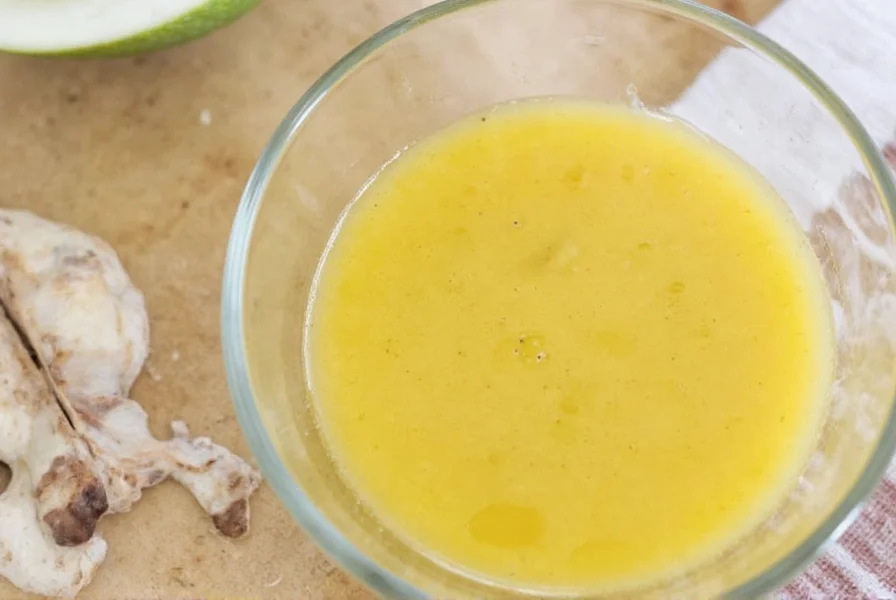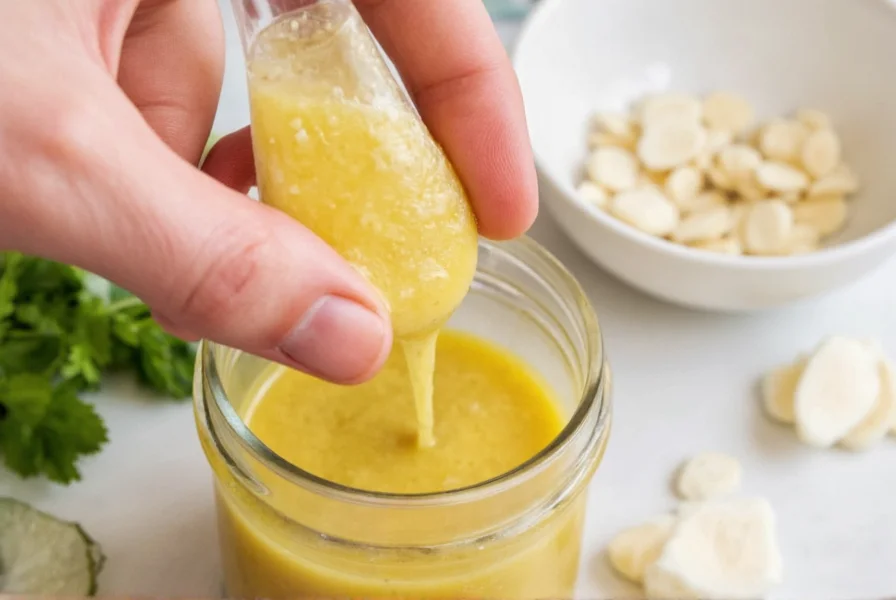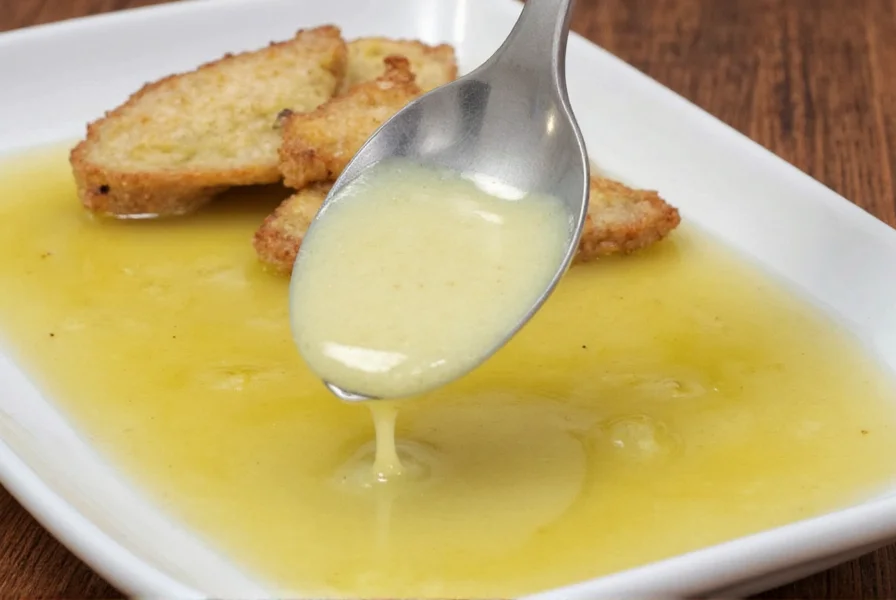Creating the perfect ginger dressing requires understanding both the essential ingredients and their roles in building flavor. This comprehensive guide explores authentic ginger dressing preparation, variations, and applications that go beyond basic salad dressing uses. Whether you're a home cook looking to elevate your meal prep or someone exploring Asian cuisine, mastering ginger dressing opens doors to countless culinary possibilities.
Essential Components of Authentic Ginger Dressing
The magic of ginger dressing lies in its ingredient synergy. While recipes vary across regions, five core elements form the foundation of most traditional ginger dressings:
| Ingredient | Function | Quality Considerations |
|---|---|---|
| Fresh ginger root | Provides spicy warmth and distinctive flavor | Young ginger preferred for milder taste; avoid fibrous or dried roots |
| Soy sauce | Delivers umami and saltiness | Use reduced-sodium for better flavor control; tamari for gluten-free |
| Rice vinegar | Offers mild acidity and brightness | Unseasoned preferred; avoid rice wine vinegar with added sugar |
| Sesame oil | Contributes nutty aroma and richness | Use toasted sesame oil sparingly; quality varies significantly |
| Natural sweetener | Counterbalances acidity and heat | Honey, maple syrup, or unrefined sugar work best |
Classic Homemade Ginger Dressing Recipe
This authentic ginger dressing recipe yields approximately 1 cup and requires just 10 minutes of preparation. The key to exceptional flavor lies in using freshly grated ginger rather than powdered alternatives.

Ingredients
- 3 tablespoons freshly grated ginger (about 2-inch piece)
- 3 tablespoons rice vinegar
- 2 tablespoons reduced-sodium soy sauce
- 1½ tablespoons sesame oil
- 1 tablespoon honey or maple syrup
- 1 clove garlic, minced
- 1 teaspoon lime or lemon juice
- 2-3 tablespoons neutral oil (grapeseed or avocado)
- Optional: 1 teaspoon red pepper flakes or ½ teaspoon fresh chili
Preparation Method
- Peel ginger using a spoon (gentler than a knife) and grate finely on a microplane
- Combine ginger, rice vinegar, soy sauce, sesame oil, and sweetener in glass bowl
- Whisk vigorously until emulsified (about 1 minute)
- Gradually add neutral oil while whisking continuously
- Stir in remaining ingredients and adjust seasoning to taste
- Let rest 15 minutes before use to allow flavors to meld
Variations for Different Dietary Needs and Preferences
Adapting ginger dressing for specific requirements maintains its essential character while accommodating various dietary restrictions. These modifications preserve the dressing's integrity without compromising flavor.
Common Adaptations
- Vegan version: Substitute honey with maple syrup or agave nectar
- Gluten-free: Use tamari instead of soy sauce (verify gluten-free certification)
- Low-sodium: Reduce soy sauce by 50% and compensate with rice vinegar and citrus
- Extra creamy: Add 1 tablespoon tahini or Greek yogurt for richer texture
- Milder version: Blanch grated ginger in hot water for 30 seconds to reduce heat
Optimal Uses for Ginger Dressing Beyond Salad
While many associate ginger dressing primarily with salad applications, its versatility extends to numerous culinary uses that showcase its complex flavor profile.

Recommended Applications
- Protein marinade: Excellent for chicken, salmon, or tofu (marinate 30-60 minutes)
- Grain bowl dressing: Perfect for quinoa, rice, or noodle bowls with roasted vegetables
- Dipping sauce: Ideal for spring rolls, dumplings, or grilled meats
- Stir-fry enhancer: Add during final cooking stage for glossy finish
- Soup finisher: Drizzle over miso soup or noodle soups before serving
Storage Guidelines and Shelf Life
Proper storage maintains ginger dressing's flavor integrity and ensures food safety. Unlike commercial dressings with preservatives, homemade versions have specific shelf life considerations.
Store ginger dressing in an airtight glass container in the refrigerator. The dressing will keep for 5-7 days, though flavor intensity diminishes after day 3. Separation is normal—simply shake or whisk before use. For longer storage, freeze in ice cube trays then transfer to freezer bags for up to 3 months. Thaw in refrigerator before use.
Troubleshooting Common Ginger Dressing Issues
Even experienced cooks encounter challenges with ginger dressing preparation. Understanding these common issues helps achieve consistent results.
Problem-Solving Guide
- Excessive heat: Balance with additional sweetener or citrus; blanch ginger first
- Separation: Ensure proper emulsification by adding oil gradually while whisking
- Too salty: Dilute with additional vinegar or citrus juice, not water
- Flat flavor: Add pinch of salt to enhance other flavors; use fresh ginger
- Overpowering sesame: Reduce sesame oil and increase neutral oil proportion
Nutritional Profile and Health Considerations
Ginger dressing offers more than just flavor—it contributes nutritional benefits when prepared thoughtfully. Two tablespoons (30ml) of standard ginger dressing typically contains:
- Calories: 80-100
- Fat: 7-9g (primarily healthy unsaturated fats)
- Carbohydrates: 4-6g
- Protein: 1g
- Sodium: 300-400mg (varies significantly by recipe)
The fresh ginger in homemade ginger dressing provides gingerol, a compound with anti-inflammatory properties. When preparing ginger dressing for health considerations, focus on quality ingredients and appropriate portion sizes rather than eliminating beneficial fats that help absorb nutrients from vegetables.
Frequently Asked Questions
How long does homemade ginger dressing last in the refrigerator?
Properly stored in an airtight glass container, homemade ginger dressing maintains best quality for 5-7 days in the refrigerator. Flavor intensity gradually diminishes after the third day. Separation is normal and can be remedied by shaking or whisking before use.
Can I substitute ground ginger for fresh ginger in dressing?
While possible in a pinch, ground ginger makes inferior ginger dressing. Freshly grated ginger provides brighter flavor, better texture, and more pronounced aromatic compounds. If substituting, use ¼ teaspoon ground ginger for every tablespoon of fresh, but expect significantly different flavor profile and reduced complexity.
Why does my ginger dressing separate and how can I prevent it?
Separation occurs when emulsion breaks, typically from improper oil incorporation. To prevent separation, add neutral oil gradually while whisking vigorously. Using a small amount of honey or tahini helps stabilize the emulsion. If separation occurs, simply shake or re-whisk before use—this is normal with oil-based dressings without commercial stabilizers.
What's the best way to adjust ginger dressing that's too spicy?
To reduce excessive heat in ginger dressing, add additional sweetener (honey or maple syrup) or citrus juice. Alternatively, blanch freshly grated ginger in hot water for 30 seconds before using to mellow its heat while preserving flavor. Avoid adding water, which dilutes all flavors rather than specifically counterbalancing the spiciness.
Can ginger dressing be used as a marinade for meat?
Yes, ginger dressing makes an excellent marinade for chicken, salmon, tofu, and other proteins. Marinate for 30-60 minutes (not longer, as the acidity can begin to 'cook' the protein). The ginger's enzymes help tenderize while the flavors penetrate. Reserve some dressing for serving after cooking to avoid cross-contamination.











 浙公网安备
33010002000092号
浙公网安备
33010002000092号 浙B2-20120091-4
浙B2-20120091-4